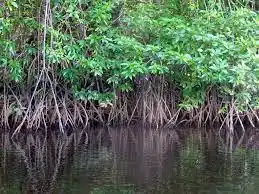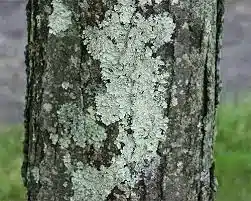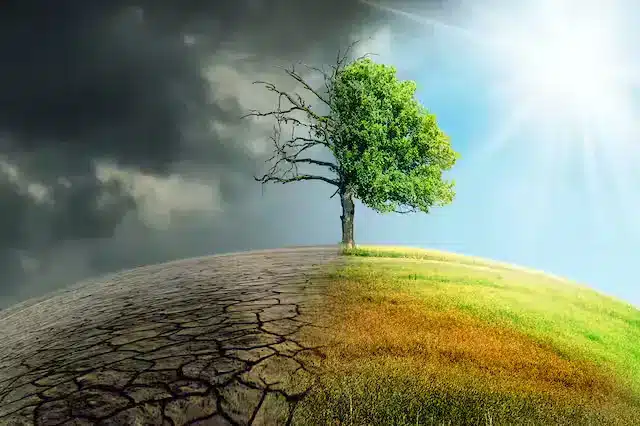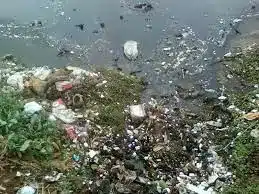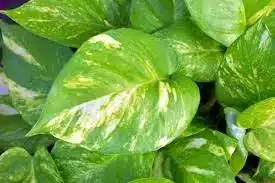INTRODUCTION of BIODIVERSITY
- Biodiversity is defined as the variety of living species on Earth – plants, animals and microorganisms – and the ecosystems they form.
- The term ‘biodiversity’ was popularized by the sociobiologist Edward Wilson. Biodiversity is of three types:
- Genetic diversity – It refers to the total number of genes in the genetic makeup of a species. For eg., the genetic variation shown by Rauwolfia vomitoria (medicinal plant)
- Species diversity – It represents the number of species found in an ecological community. Example – Western ghat has a greater amphibian species compared to Eastern ghats
- Ecological diversity – Greater diversity observed at the ecosystem level in a particular area with its deserts, mangroves, rain forests etc.
- Global biodiversity loss is occurring at alarming rates – an estimated 100 to 1,000 times faster than pre-human levels — and the threats are numerous.
Patterns Of Biodiversity
Darwin noticed three distinctive patterns of biological diversity: (1) Species vary globally, (2) species vary locally, and (3) species vary over time. Darwin noticed that different, yet ecologically similar, animal species inhabited separated, but ecologically similar, habitats around the globe.
PATTERNS ACCORDING TO SPACE
Latitudinal Gradients
Species diversity decreases towards the poles. There are a number of species in the tropics as compared to the temperate and polar regions. This is due to the following reasons:
- The tropical regions have remained undisturbed for several years. This resulted in the diversification of species in the tropics.
- The environment in the tropics is more predictable and constant. This is yet another reason for increased species diversity.
- The solar energy adds to higher productivity and helps in increasing biodiversity in the tropics.
Habitat Variety
Like the variety of the habitat increases, greater is the species diversity within it. This pattern explains, why there are more species in a bigger area. The big area covers a greater variety of habitat
PATTERNS ACCORDING TO TIME
Seasonal patterns
- The diversity of species can be seen during different seasons of the year.
- According to different seasons, the population of one particular species fluctuates.
- For example, some terrestrial beetles have larval stages that are underground and they only emerge to the surface as adults.
- The birds also show seasonal patterns, because many are migratory and the bird diversity of an area may be affected by the absence of seasonal breeders and the presence of migrants passing through.
- These seasonal patterns are mostly seen in temperate areas but are also reported in tropical areas. In both terrestrial and aquatic habitats, the diversity of species can be seen during different seasons.
Successional patterns
- After a disturbance (such as fire or harvesting in agriculture), the plants and animals’ species begin to reoccupy the habitat, grow, and get replaced or out-competed by other species. This pattern of a gradual time-based shift in the species composition of a community is called succession.
- It may result from a variety of processes including migration, dispersal, growth, competition and environmental change.
- For plants, diversity increases with succession until woody species (trees and brushes) begin to flourish, whereby diversity then decreases. For animals, diversity generally increases with succession, for example, this has been observed for birds and insects.
Biodiversity Hotspots
- A biodiversity hotspot is a region with a high level of endemic species that are under threat from humans.
- The term hotspot was introduced in 1988 by Norman Myers, when he identifi ed 10 tropical forest hotspots characterised by exceptional level of plant endemism and by serious levels of habitat loss.
- In 1990 Myers added further 8 hotspots including mediterranean type ecosystem.
- Conservational International adopted Myers hotspots as its institutional blueprint in 1989.
- According to the Conservation International the criteria for determining a hotspot are:
- The area should contain at least 0.5% or 1,500 species of vascular plants as endemics,
- It must have lost over 70 % of the original habitat
- The North American Coastal Plains is the latest addition to the list of Biodiversity Hotspot of the world to become the 36th Biodiversity Hotspot.
Biodiversity Hotspots in India
- Himalaya: Includes the entire Indian Himalayan region (and that falling in Pakistan, Tibet, Nepal, Bhutan, China, and Myanmar).
- Indo-Burma: Includes entire North-eastern India, except Assam and Andaman group of Islands (and Myanmar, Thailand, Vietnam, Laos, Cambodia, and southern China).
- Sundaland: Includes Nicobar group of Islands (and Indonesia, Malaysia, Singapore, Brunei, Philippines).
- The Western Ghats and Sri Lanka: Includes entire Western Ghats (and Sri Lanka). It is sometimes called the great escarpment of India.
Loss Of Biodiversity
Loss of biodiversity in a region can lead to
- Deterioration in plant production,
- Decreased resistance to environmental issues such as drought, global warming, etc.
- High variability in certain ecosystem processes such as plant productivity, water use and pest and disease cycles.
Causes of Biodiversity Loss
Following are the causes of loss of biodiversity:
- Degradation, fragmentation, and loss of habitat
- Spreading of invasive species
- Unsustainable use of the natural resource
- Change of Climate
- Inappropriate fire regimes
- Changes within the aquatic environment and water flows
- Co-extinctions
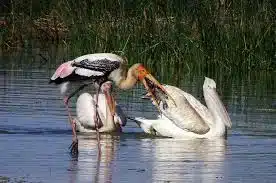
Reasons for Biodiversity Conservation
Biodiversity should be conserved for the following reasons:
- Humans derive a number of economic benefits from nature such as firewood, food, construction material, fibre, and medicines.
- The Amazon forests provide 20% of the total atmospheric oxygen on earth.
- These are our biological legacies and should be passed on to future generations.
- The birds, bees and birds are some of the pollinating agents in the ecosystem.
Biodiversity Conservation
Biodiversity conservation is the protection, upliftment and management of biodiversity to derive sustainable benefits for present and future generations.
Biodiversity can be conserved by the following two methods:
In situ conservation
It involves the protection and conservation of a variety of animals and plant species in its natural habitat. It includes biosphere reserves, hot spots, national parks and sanctuaries, wild forests etc.
EXAMPLE
National Parks:
- It is an area which is strictly reserved for the betterment of the wildlife and where activities like forestry, grazing on cultivation are not permitted.
- Even private ownership rights are not allowed.
- In national parks, the emphasis is on the preservation of a single plant or animal species.
Wildlife Sanctuaries
- It is a protected area which is reserved for the conservation of only animals and human activities like harvesting of timber, collecting minor forest products and private ownership rights are allowed as long as they do not interfere with the well-being of animals.
- Boundaries of sanctuaries are not well defined and controlled biotic interference is permitted, e.g., tourist activity.
Biosphere Reserves
- Biosphere reserves are areas comprising terrestrial, marine and coastal ecosystems.
- Each reserve promotes solutions reconciling the conservation of biodiversity with its sustainable use.
- Biosphere reserves are ‘Science for Sustainability support sites’ – special places for testing interdisciplinary approaches to understanding and managing changes and interactions between social and ecological systems, including conflict prevention and management of biodiversity.
- A biosphere reserve has 3 parts: core, buffer and transition zone.
- Core zone is the inner zone; this is undisturbed and legally protected area.
- Buffer zone lies between the core and transition zone. Some research and educational activities are permitted here.
- Transition zone is the outermost part of biosphere reserves. Here cropping, forestry, recreation, fishery, and other activities are allowed.
Reserve Forest
- These forests are under the direct supervision of the government and no public entry is allowed for the collection of timber or grazing of cattle.
- About 53 percent of the total forest area falls in this category.
Advantages of in-situ conservation
- The flora and fauna live in natural habitats without human interference.
- The life cycles of the organisms and their evolution progress in a natural way.
- In-situ conservation provides the required green cover and its associated benefits to our environment.
- It is less expensive and easy to manage.
- The interests of the indigenous people are also protected.
Ex-situ conservation
It involves protection and conservation of rare species of animals and plants outside their natural habitats. These include zoos, aquariums, botanical gardens, gene banks, etc.
EXAMPLE
Seed gene bank
- Cold storages where seeds are kept under controlled temperature and humidity for storage and this is the easiest way to store the germplasm of plants at low temperature.
- Seeds preserved under controlled conditions (minus temperature) remain viable for long durations of time.
Gene bank
- Genetic variability also is preserved by a gene bank under normal growing conditions.
- These are cold storages where germplasms are kept under controlled temperature and humidity for storage; this is an important way of preserving genetic resources.
Tissue culture bank
- Tissue culture, a method of biological research in which fragments of tissue from an animal or plant are transferred to an artificial environment in which they can continue to survive and function.
- The cultured tissue may consist of a single cell, a population of cells, or a whole or part of an organ.
Botanical gardens
- A botanical garden is a place where flowers, fruits, and vegetables are grown.
- The botanical gardens provide beauty and calm environment.
- Most of them have started keeping exotic plants for educational and research purposes.
Zoological Gardens
- In zoos wild animals are maintained in captivity and conservation of wild animals (rare, endangered species).
- It may be stationary or mobile, where captive animals are kept for exhibition to the public and includes a circus and rescue center.
Cryopreservation:
- This is the newest application of technology for the preservation of living cells and tissues.
- This type of conservation is done at very low temperature (196°C) in liquid nitrogen.
- The metabolic activities of the organisms are suspended under low temperature, which is later used for research purposes.
Long term captive breeding
- The method involves capture, maintenance and captive breeding on a long term basis of individuals of the endangered species which have lost their habitat permanently or certain highly unfavorable conditions are present in their habitat.
Advantages of ex-situ preservation
- Useful for the declining population of species.
- Endangered animals on the verge of extinction are successfully bred.
- Threatened species are bred in captivity and then released in the natural habitats.
- Ex-situ centers offer the possibilities of observing wild animals, which is otherwise not possible.
- It is extremely useful for conducting research and scientific work on different species.
The basic difference between in-situ and ex-situ conservation : In-situ conservation refers to the conservation of species in their natural habitats whereas ex-situ conservation refers to the conservation of species outside their natural habitats.
Also refer :

